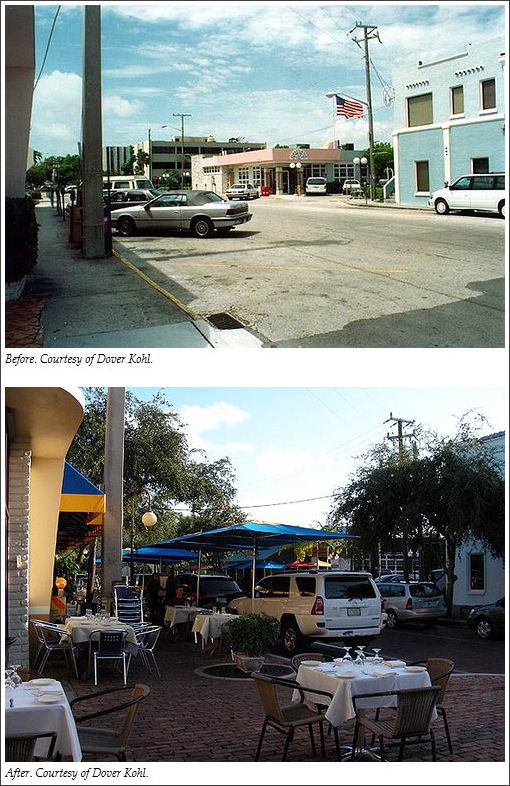by James A. Bacon
Tactical urbanism is the term used to describe small, inexpensive, often temporary, urban improvements that make life more colorful, fun or livable. They include such things as guerilla gardening, parklets, pavement to parks, pop-up retail, pavement-to-plaza, de-paving and chair bombing (the latter would be the creation of public seating, not the destruction of it). See the Tactical Urbanism manual for details.
Tactical urbanism is spreading, and it’s making cities more fun places to live. As far as I’ve seen, there is no comparable movement for the suburbs. If suburban neighborhoods and business districts are to remain competitive places to live, work and play, someone needs to develop a Tactical Suburbanism manual. County governments and civic groups need a playbook for making the suburban environment more colorful, playful and livable.
A recent article in Atlantic Cities recounts a move in the right direction. Although it describes changes that are larger than those prescribed by tactical urbanism, they are relatively small scale, requiring modest investment, and they can be readily replicated if successful. Here’s an example of how the City of South Miami (which, despite it’s name is suburban in design) transformed one particularly dreary block:
Which of the two versions would you prefer to spend more of your time? Which would you rather have in your neighborhood? Which one does more to enhance property values and tax revenues? Not much of a contest, is it?
Here’s the beauty of small-scale change — it doesn’t have to cost a lot of money. Just reallocate money already dedicated to public works improvements. Let me give you an example from my home locality, Henrico County. A major arterial, Parham Road, runs between my neighborhood and Interstate 64. A median strip divides the north-bound lanes from the south-bound lanes. Earlier this year, the county ripped up several hundred yards of concrete median and replaced it with a concrete-bounded grass median. I don’t know how much money the county spent — tens of thousands of dollars, surely — but the net result is a marginal improvement over what had been there previously. The median strip was transformed from ugly to merely bland. In a month’s time, no one will notice the change. Nobody’s property values improved. No one was induced to invest more private money.
County funds could have been spent far more productively elsewhere. There are hundreds of locations in Henrico where small public improvements would have a transformative effect at the micro-level, ideally even inspiring property owners to invest their own money to dress up their buildings and the public spaces around them. There is minimal creativity devoted to the public domain in Henrico, minimal attention paid to the art of place making. That needs to change.
I’ll have more to say about this shortly in a soon-to-be-published article, which I will re-post on this blog.



